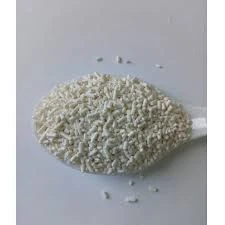
e160 food additive
Understanding E160 Food Additives The Colorful World of Carotenoids
Food additives play a significant role in enhancing the appearance, taste, and shelf life of various food products. Among these additives, E160 refers to a group of substances primarily derived from natural sources, specifically carotenoids, which are pigments found in plants. Carotenoids are responsible for the vibrant colors of fruits and vegetables, ranging from yellows to deep reds, and are not only aesthetically pleasing but also beneficial for health.
What are E160 Additives?
E160 is a classification that includes several carotenoid compounds used as food colorants. The most prominent examples are beta-carotene, lutein, lycopene, and annatto. Each of these additives offers distinctive hues that enhance food visually, making them more appealing to consumers. Notably, beta-carotene, often derived from carrots, is well-known for imparting an orange color and is also a precursor to vitamin A, which is essential for vision and immune function.
The Benefits of E160 Additives
Beyond their decorative qualities, E160 additives serve multiple functions in food products. For one, they can provide nutritional benefits. Beta-carotene, for instance, is not only a coloring agent but also acts as an antioxidant, helping to protect the body from oxidative stress. Other carotenoids, such as lutein, are known to contribute to eye health, reducing the risk of age-related macular degeneration.
Moreover, E160 additives can enhance the overall flavor profile of food products. Natural colors from sources like paprika (which contains capsanthin, another carotenoid) can complement the taste of sauces and processed foods, making them more enjoyable to consumers.
Regulations Surrounding E160 Additives
Like all food additives, E160 substances are subject to stringent regulatory standards to ensure consumer safety. Organizations such as the European Food Safety Authority (EFSA) and the U.S. Food and Drug Administration (FDA) evaluate these additives for their safety and efficacy. E160 derivatives, particularly those derived from natural sources, are generally regarded as safe when used within acceptable limits. Regulations dictate acceptable daily intake levels, ensuring that the use of carotenoids in food does not pose any health risks.
e160 food additive

Potential Concerns and Misconceptions
Despite their safety and benefits, there are common misconceptions about artificial versus natural colorants in food. E160 additives are often viewed more favorably than synthetic alternatives due to their natural origins. However, it’s essential to recognize that natural does not always mean better. The effectiveness and safety of any food additive depend significantly on its application, dosage, and the specific consumer population.
Additionally, some individuals may have allergic reactions or sensitivities to certain natural additives, including E160. For instance, products derived from annatto can trigger allergies in susceptible individuals, underscoring the importance of food labeling and consumer awareness.
Applications in Food Products
E160 additives are widely utilized across various food products. Snack foods, beverages, dairy products, and sauces frequently incorporate these colorants to enhance visual appeal. For example, beta-carotene is commonly found in margarine to give it a desirable golden hue, while annatto may be used in cheese products to achieve a consistent color.
In the realm of health foods, E160 additives are also used to create visually appealing products without compromising on health benefits. As more consumers turn toward natural and organic products, the demand for natural colorants like E160 is expected to rise.
Conclusion
In summary, E160 food additives represent a vibrant and beneficial category within the world of food coloring. Derived primarily from natural sources, these carotenoids not only enhance the appearance of food but also contribute essential nutritional benefits. As awareness grows regarding healthy eating and natural products, the use of E160 additives will likely continue to expand, providing consumers with appealing and nutritious food choices. Understanding these additives is crucial for making informed dietary decisions, ensuring a balance between enjoyability and health-conscious eating.
-
Pure Sodium Dichloroisocyanurate Dihydrate | Powerful DisinfectantNewsAug.29,2025
-
Industrial Chemicals: Quality & Purity for Every IndustryNewsAug.28,2025
-
Nitrile Rubber Honoring Strict Production StandardsNewsAug.22,2025
-
Aspartame Ingredients Honoring Food Safety ValuesNewsAug.22,2025
-
Fertilizer for Balanced Plant NutritionNewsAug.22,2025
-
Cyanide Gold Processing with High Purity AdditivesNewsAug.22,2025
-
Formic Acid in Textile Dyeing ApplicationsNewsAug.22,2025
Hebei Tenger Chemical Technology Co., Ltd. focuses on the chemical industry and is committed to the export service of chemical raw materials.
-

view more DiethanolisopropanolamineIn the ever-growing field of chemical solutions, diethanolisopropanolamine (DEIPA) stands out as a versatile and important compound. Due to its unique chemical structure and properties, DEIPA is of interest to various industries including construction, personal care, and agriculture. -

view more TriisopropanolamineTriisopropanolamine (TIPA) alkanol amine substance, is a kind of alcohol amine compound with amino and alcohol hydroxyl, and because of its molecules contains both amino and hydroxyl. -

view more Tetramethyl Thiuram DisulfideTetramethyl thiuram disulfide, also known as TMTD, is a white to light-yellow powder with a distinct sulfur-like odor. It is soluble in organic solvents such as benzene, acetone, and ethyl acetate, making it highly versatile for use in different formulations. TMTD is known for its excellent vulcanization acceleration properties, which makes it a key ingredient in the production of rubber products. Additionally, it acts as an effective fungicide and bactericide, making it valuable in agricultural applications. Its high purity and stability ensure consistent performance, making it a preferred choice for manufacturers across various industries.





